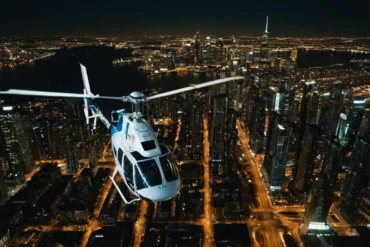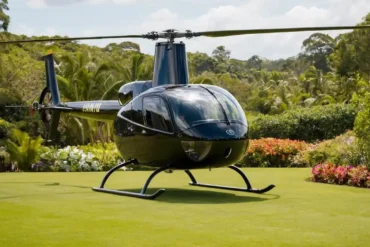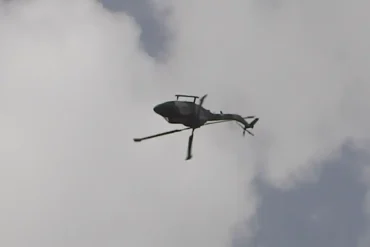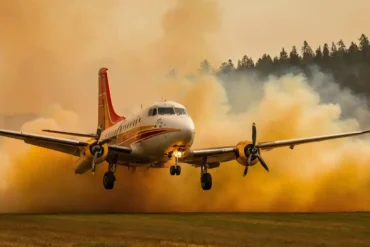Helicopters are amazing machines that can do things regular planes can’t, like take off straight up and hover in place. But when it comes to flying high, helicopters have some natural limitations compared to airplanes. Let’s explore why.
In general, most helicopters top out around 25,000 feet up. That’s much lower than a typical passenger jet, which cruises above 40,000 feet. Hovering height for helicopters is about 10,000 feet maximum.
Here are some examples of altitude limits for popular helicopter models:
| Helicopter Model | Altitude Limit |
|---|---|
| Schweizer 300 CB | 10,000 ft |
| Robinson R22 | 14,000 ft |
| Bell 206 Jet Ranger | 13,500 ft |
| Mil MI-26 | 15,100 ft |
| Eurocopter AS 350 Astar | 20,000 ft |
| Agusta Z139 | 20,000 ft |
| Boeing Chinook CH-47F | 20,000 ft |
| Eurocopter SA 315B Lama | 23,000 ft |
In 2002, Fred North set the world record for highest helicopter flight at 42,500 ft. And in 2005, a helicopter landed on the summit of Mount Everest at 29,030 ft, the highest helicopter landing ever.
So why can’t helicopters go as high as airplanes? The main factors are weight and air density.
Why Helicopters Have Trouble at High Altitudes
Aircraft need enough power to lift their weight off the ground. The heavier the load, the more power the engine needs to generate enough lift. Helicopter rotor blades have a harder time making lift when carrying heavier loads.
Also, helicopters need enough air flowing through the rotors and into the engine to keep flying. At higher altitudes the air gets thinner, so there’s less air for the rotors to produce lift and for the engine to produce power.
The size-to-weight ratio of helicopters combined with thinner air at altitude makes high-altitude flying very difficult.
How Heat and Humidity Make It Even Harder
Thinner air becomes an even bigger issue in hot or humid conditions. Hot temperatures make air expand, so there are fewer air molecules available to power the engine and rotors. Humid air is heavy with water vapor, which also reduces the number of air molecules that produce lift.
So a helicopter can typically reach greater heights in a place like Alaska than in hot, humid equatorial areas at the same altitude.
Practical Challenges of High-Altitude Helicopter Flight
In real flights, a helicopter has to do more than just fly forward. It also needs to hover, take off, and land. Hovering takes a lot more power than forward flight. This can make hovering and landing at high altitudes problematic.
Hovering close to the ground does get a boost from the “ground effect.” The cushion of air that forms under the helicopter when it’s near the ground helps create extra lift. But this only works up to about 1-1.5 rotor lengths above the surface. After that, the ground effect is lost.
In rescue, firefighting and other critical operations, pilots often have to hover out of ground effect. This requires a lot of power and becomes very difficult at higher altitudes.
Most helicopters also lack oxygen equipment and pressurization for high altitudes. This adds safety risks for pilots.
Sky-High: How the Helicopter Altitude Record Was Set
In 2002, expert pilot Fred North did the seemingly impossible by taking a helicopter to 42,500 ft – a new world record!
Fred had thousands of hours flying the AS 350 B2 “Squirrel” helicopter used in the record flight. He planned extensively, picking ideal weather and using mountain updrafts. His chopper weighed 200 kg less than normal, had an oxygen system, and a compression suit to aid breathing.
Even with all this, it was tremendously difficult. Fred lost airspeed as he climbed until he relied solely on rising mountain air currents. After reaching the record height, he knew it was time to descend.
On the way down, the engine failed! With no restart possible, Fred had to perform a no-engine landing. He stated unequivocally he’d never try it again due to the extreme danger.
The Reality of High-Altitude Helicopter Flight
Fred North’s dramatic flight shows just how risky it is pushing a helicopter to extreme altitudes. Most pilots will never need to go anywhere near that high.
But even at more modest elevations, caution is essential when flying over mountains, especially in hot weather. The hazards of a “hot and high” environment are drilled into every helicopter trainee. Many pilots get specialized mountain flying instruction for added safety.
I learned about mountain flying challenges first-hand years ago as a relatively new pilot in California. Against the flight school owner’s advice, I took an R22 helicopter to a 10,000 ft mountain airport on a hot day without an instructor.
After landing easily, temperatures rose and the wind died. Hovering to depart became nearly impossible! Luckily the long runway allowed a “running takeoff” to get airborne. If we had landed on a mountaintop instead, we might have been stuck for hours awaiting better conditions.
This experience taught me to respect the very real limits helicopters face at altitude. While technology may allow more powerful helicopters in the future, the basic constraints around weight, air density and engine power remain.
Conclusion
Helicopters can perform remarkable aerial maneuvers that fixed-wing aircraft cannot. But physics limits how high they can fly compared to airplanes. Understanding these boundaries keeps pilots and passengers safe while still enjoying everything helicopters can do within their operational envelope.







